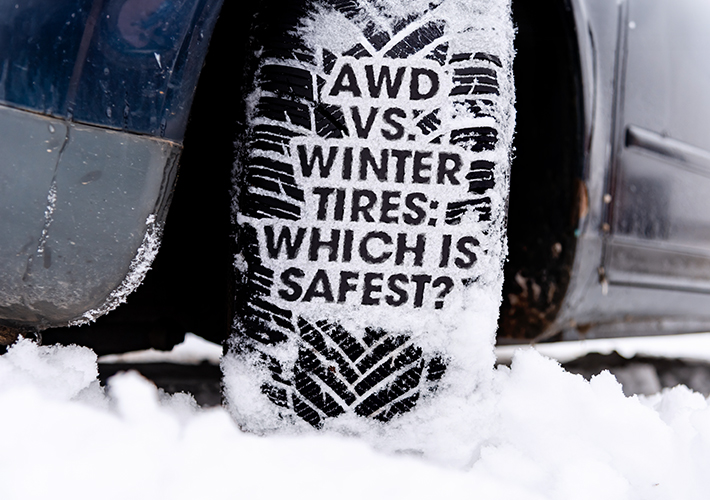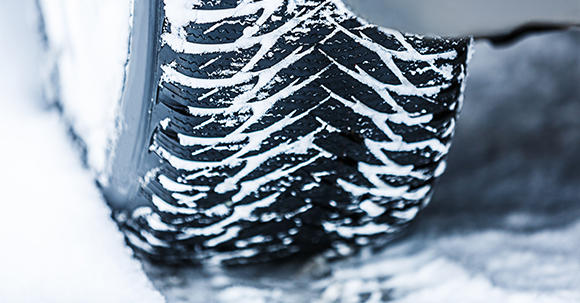
Staying Safe on Snowy Roads: AWD vs. 4WD vs. Winter Tires
We all know that winter weather in South Dakota can be unforgiving — turning your morning commute into a scene straight out of a disaster movie. Luckily, automotive technology has allowed proud Midwesterners to stare Mother Nature in the face and rise to her challenge.
“Do your worst,” the Midwesterner says. “My trusty steed delivers power to all of its wheels!”
But are four-wheel and all-wheel drive really helping us stay safe, or is there a better way? When the worst weather and truest test arrives, will we still be the ones laughing?

Great for Going, Not for Stopping
For many snow belt residents, all-wheel drive and four-wheel drive are considered the go-to solution for getting around in wet, cold and snowy conditions. And that’s partially accurate — they’re fantastic for getting (and keeping) you going in tough conditions, such as in deep snow or up a slick hill. But there’s a catch: AWD and 4WD do not help you stop or grip the road in icy conditions. After all, if your tires lose traction with the road, it doesn’t matter how many of them are spinning.

Traction When It Counts
Enter winter tires: the real rough-weather warriors and conquerors of slick conditions. Unlike standard tires, winter tires are made with a special rubber compound that stays flexible in frigid temperatures, allowing them to grip the road more effectively. They also have deeper treads with special patterns designed to push snow, slush and water out of the way — leaving less between rubber and road.

Lean Toward Caution, Not Confidence
In any battle, overconfidence can be dangerous — and our struggle against snowy roads is no different. If your vehicle is equipped with AWD or 4WD, it’s easy to fall into the trap of feeling invincible on the roads. Even if you’ve got the right tools for the job, pay careful attention to conditions and adapt your driving style appropriately. Slow down, leave extra space for braking and avoid taking overly sharp turns.

A Worthwhile Investment
There’s no way of getting around one fact that prevents people from embracing winter tires: they’re going to cost you some of your hard-earned cash. However, you can’t put a price on safety, and the right frame of mind can help you justify the expense. Consider the alternative: If you stick with summer or all-season tires year ‘round, you’re at a higher risk for sliding into a curb or getting in a fender bender — both of which are going to be a lot bigger hit to the wallet and headache to deal with.
One way to make swapping between summer and winter tires easier and more affordable in the long run is by investing in an extra set of wheels. Having a dedicated set for your winter tires means you can quickly install them when the weather calls for it without the hassle and expense of mounting and unmounting tires. If you’re handy, you can even do it at home. Plus, using two sets of tires seasonally actually helps them last longer. Your summer tires will see less use and avoid exposure to harsh winter conditions, extending their lifespan.

The Bottom Line
AWD and 4WD give you the power to get moving, but winter tires give you the grip you need. The safest solution? Combining both advantages. If the weather’s rough and you absolutely need to get around, putting winter tires on a car that’s also equipped with AWD is the safest way to stay in control.
Winter’s coming quickly — and when it comes to our state, Mother Nature doesn’t play nice. Get in touch with your go-to tire shop to get your ride ready.